Nature creates winter magic when tiny fungus meets freezing water. If you’ve ever seen delicate strands of ice like fine white silk on rotting wood during winter walks through the forest, you are fortunate indeed! These incredible formations are called hair ice. And, they look like Mother Nature decided to put some white wigs on her poor bark-less branches.
The secret behind these ethereal ice sculptures lies in an extraordinary partnership. A fungus named Exidiopsis effusa works together with freezing water to create these stunning natural formations.
Other common names include frost beard and ice wool.
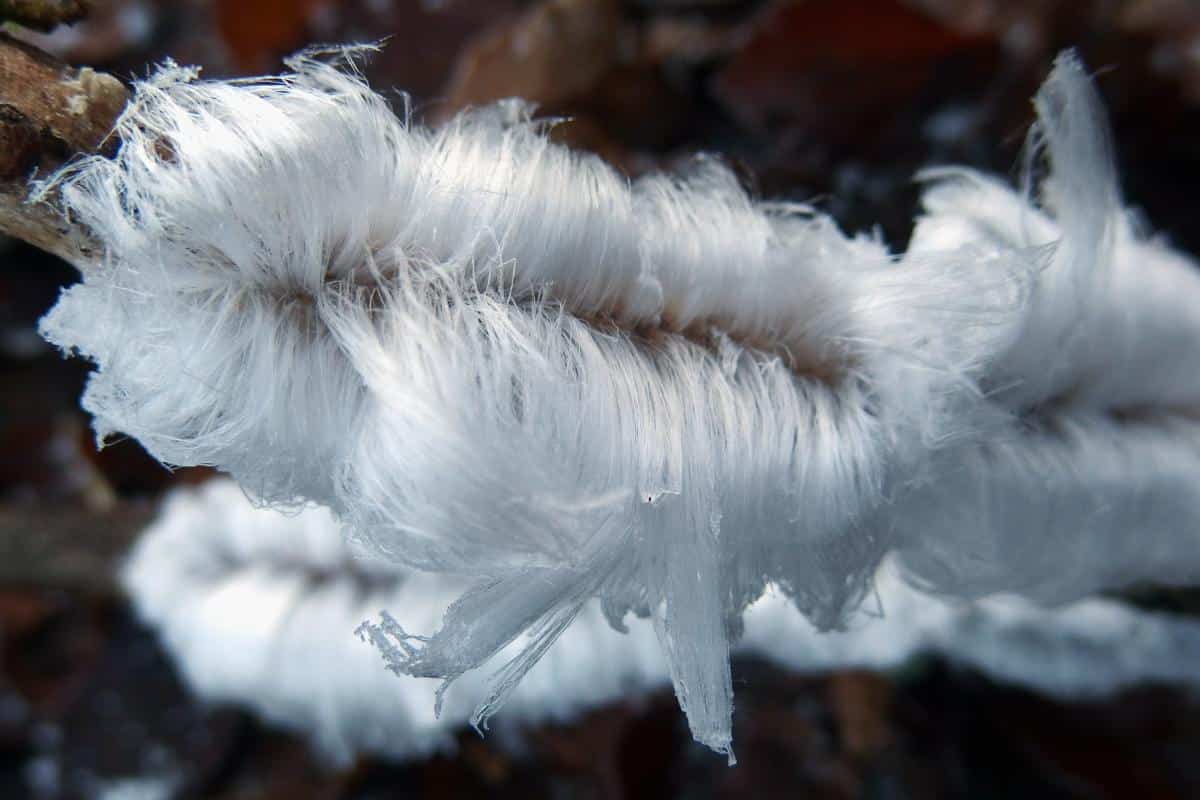
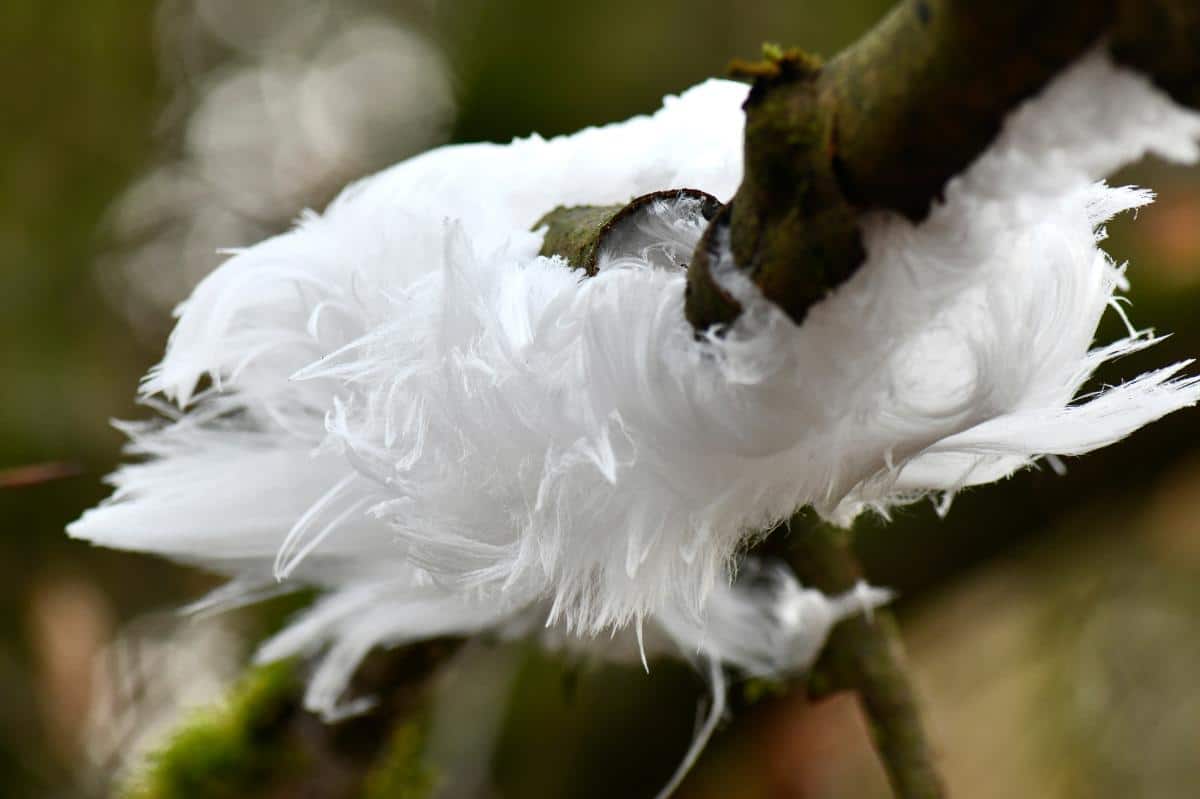
Jump to:
What Is Hair Ice?
Hair ice is collection of very thin strands of ice growing on dead hardwood branches and logs. It is bright silvery-white, smooth and has a silky, shiny appearance. The formations are usually found in dense bunches and may grow straight out or form intricate and beautiful waves and curls. There is usually a parting (like a hair part) where the strands bend away from each other. The strands grow individually, though some may fuse together somewhat.
This phenomenon only occurs on barkless dead hardwood branches or on branches where the bark is loose. In some of the photos in this guide you can see the hair ice is actively pushing the bark away. The actual hair ice formation started where there wasn’t bark or the bark was very loose, and is now pushing the bark further away.
The hair ice is very fragile and may crumble or melt if handled too much. It doesn’t usually have a long lifespan – as soon as the day starts warming up, it melts the thin ice strands. This isn’t always true, though. Sometimes, the ice strands persist for several days.
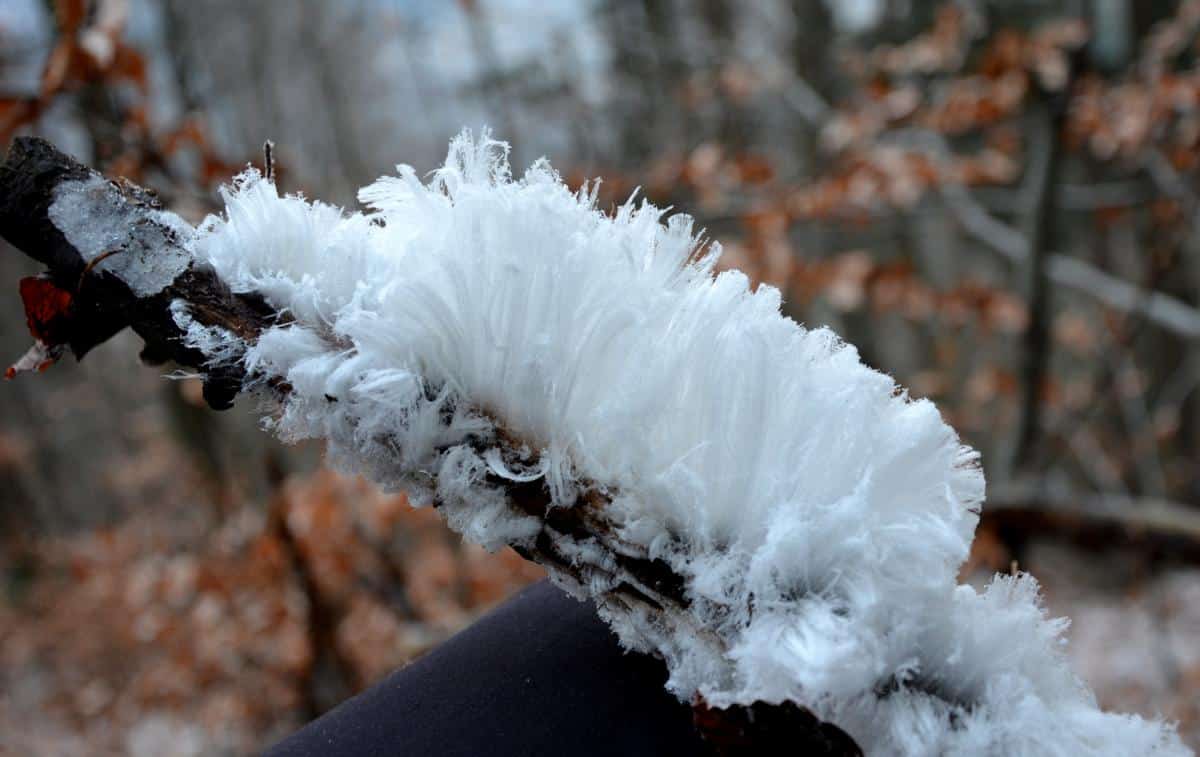
Hair Ice Formation
Hair ice forms through a process called ice segregation (ice segregation is also what causes frost heaves). It happens when liquid water moves through wood as the weather turns to freezing temperatures. It’s not just random ice formation. The growth over the wood is regulated and occurs uniformly across large areas.
Scientists describe the first step as a “wood-water-ice sandwich.” Cold air meets water at the wood’s surface, and a thin film of water gets trapped between the wood and the forming ice. This creates a suction force that pulls more water from deep inside the wood toward the surface. The water then freezes and builds upon itself.
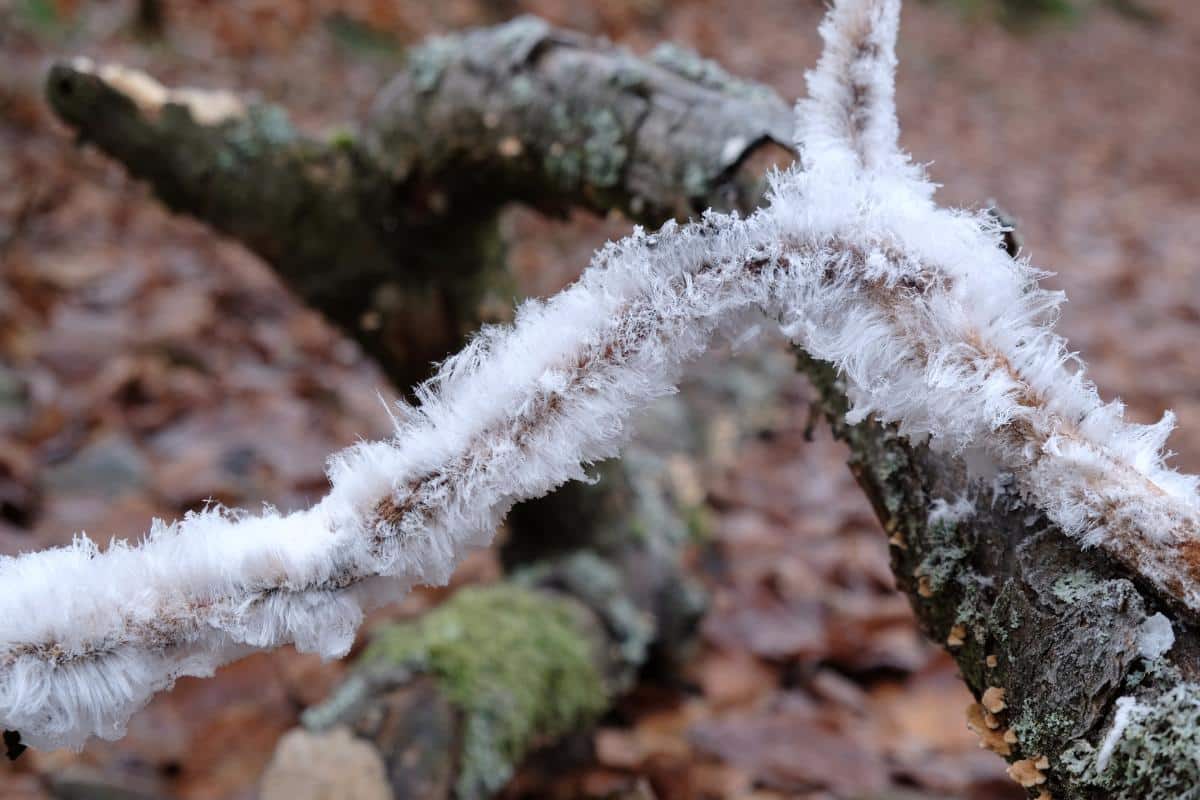
The structure of the wood itself plays a crucial role in this process. Each delicate hair forms only at specific spots on the branch called wood rays. The strands measure about 0.0008 inches in diameter (about the width of a human hair) and grow up to 8 inches in length. These dimensions aren’t random – they’re directly related to the diameter of the wood ray channels through which the water moves.
The wood ray channels often create a parting in the hair ice formation that looks much like a hair part. The hairs all emerge from these channels and then grow outwards. The curve of the hairs comes from differences in how fast they grow. The main direction of growth is toward the center, with the hairs extending from the wood rays.
Two natural compounds in wood – lignin and tannin – play supporting roles in this frozen formation. Working alongside the fungus, they prevent ice crystals from clumping together. This helps maintain those perfect hair-like strands for hours or even days.
Four key ingredients must come together for hair ice magic:
- Temperatures just below 32°F (0°C)
- High humidity levels
- Moist, rotting wood from broadleaf trees
- Presence of the fungus Exidiopsis effusa
Without these precise conditions, you might still see ice form. However, it will appear as a regular crust rather than as delicate hair-like structures. The wood needs its bark removed in order for the hair strands to form.
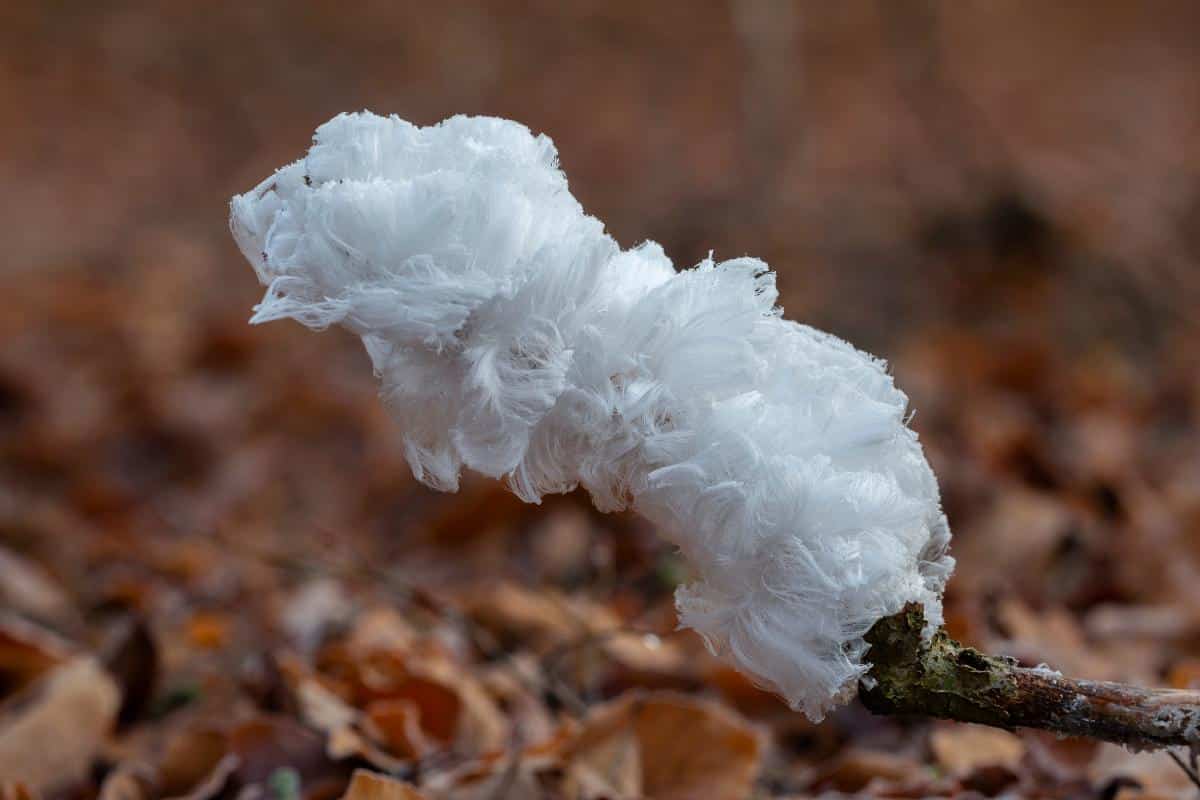
Exidiopsis Effusa: The Key Player in Hair Ice Formation
The true star of the hair ice story is a fungus called Exidiopsis effusa. This microscopic organism isn’t just present by chance – scientists have found it in every single sample of hair ice they’ve examined.
Exidiopsis effusa appears as a thin whitish coating on dead wood. It’s rather unassuming and easy to walk by without noticing. This winter-active fungus is crucial for hair ice formation. When researchers treated wood with fungicide or hot water to disable the fungus, the ice hairs simply wouldn’t form the same way.
The relationship between the fungus and the hair formation seems to be primarily structural. Without the fungus, the branch still might still form a crystalized ice crust. But this is simply a thin layer of ice, not nearly as stunning and intricate as the hairs on branches colonized by the fungus.
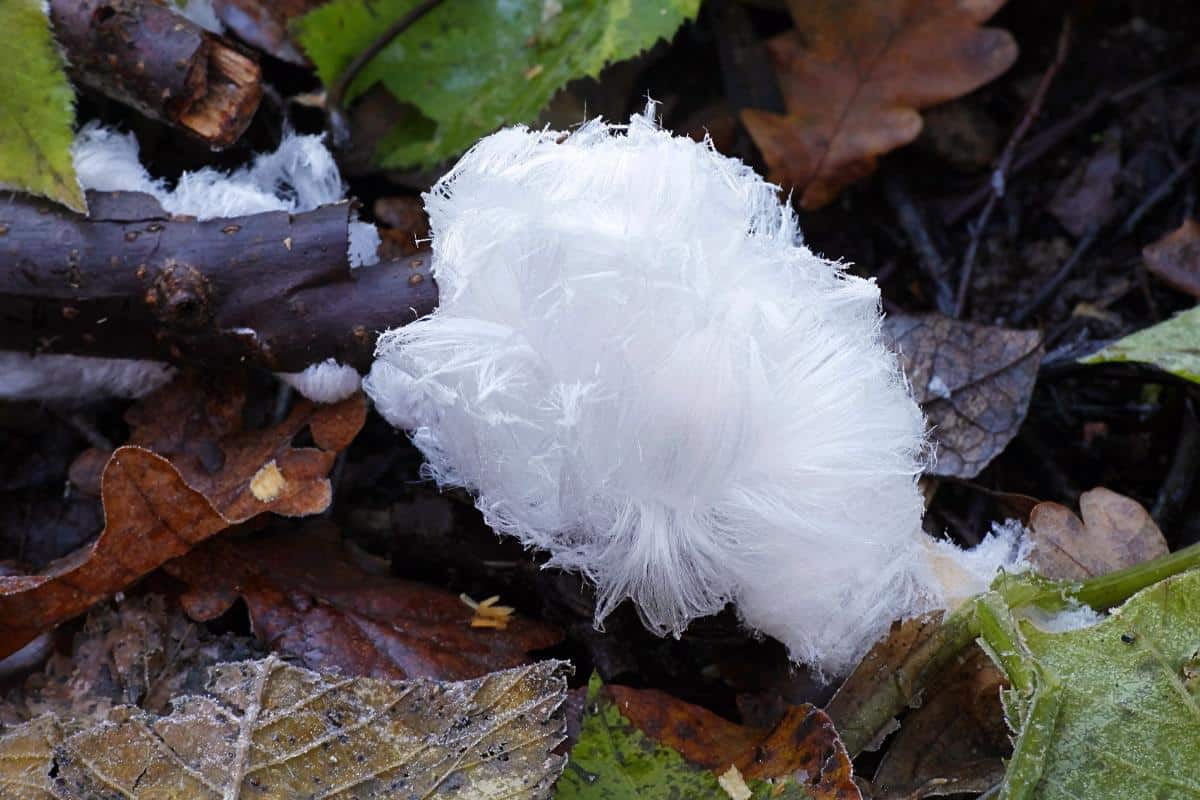
The ability of the ice to be in perfect, ultra-thin strands that do not fuse together into one big clump is due to the fungus. E. effusa creates special compounds that work as natural antifreeze. These compounds stabilize the thin ice and carefully shape the intricate ice structures. These proteins in the fungus prevent what scientists call “recrystallization” – the process where small ice crystals combine into larger ones. The protective compounds allow the fine ice structures to maintain their individual strands and hair-like appearance for hours or even days.
E. effusa is remarkably strategic in colonizing wood. The fungus weaves through wood vessels and sends tiny threads deep into the wood rays. The fungus grows along the wood and penetrates deeper into the tissue through wood rays. A typical branch with the fungus in it can continue producing hair ice for 1-3 years. Under humid conditions with temperatures above freezing, you might even spot small water droplets appearing overnight on the fungus’s surface. This process, called guttation, might play a role in the ice formation.
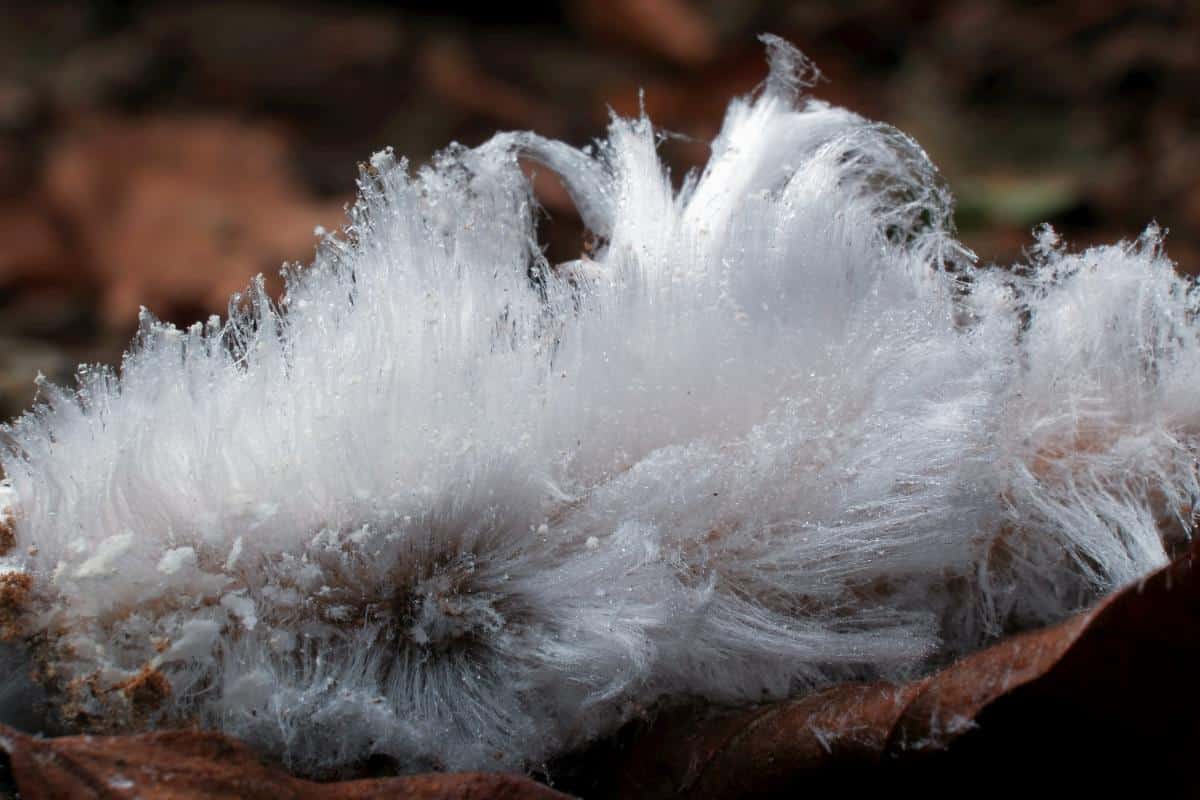
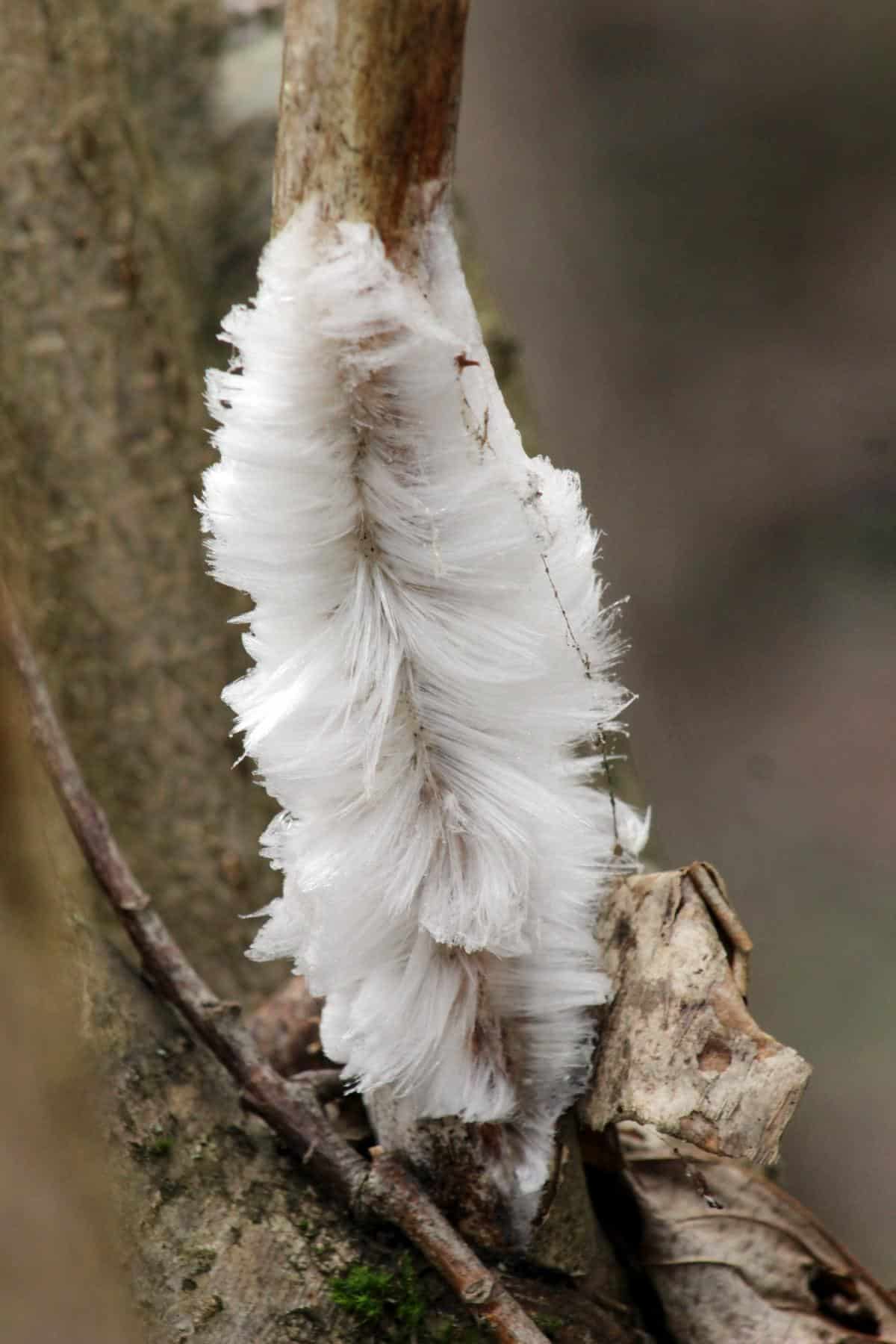
Modern Research Breakthroughs
Scientific understanding of hair ice took nearly a century to unfold. Alfred Wegener first hinted at fungal involvement in 1918. Still, it wasn’t until 2015 that researchers definitively identified Exidiopsis effusa as a key player.
Breakthrough discoveries emerged from extensive wood sample studies between 2012 and 2014. These investigations revealed that E. effusa was present in 100% of hair-ice-producing wood samples. Their careful measurements also revealed the strands measure are almost exactly 0.02 millimeters across.
Three major discoveries emerged:
- The fungus stops ice crystals from forming (which allows for “hair” strands to form)
- Hair ice only appears between 45° and 55°N latitude
- Formation happens right at or below 32°F (0°C)
Today, scientists continue investigating the precise mechanism behind how E. effusa shapes these remarkable ice formations. Current research focuses on identifying the specific recrystallization inhibitor produced by the fungus. Scientists are particularly curious about decomposed lignin’s role since it appears prominently in chemical studies.
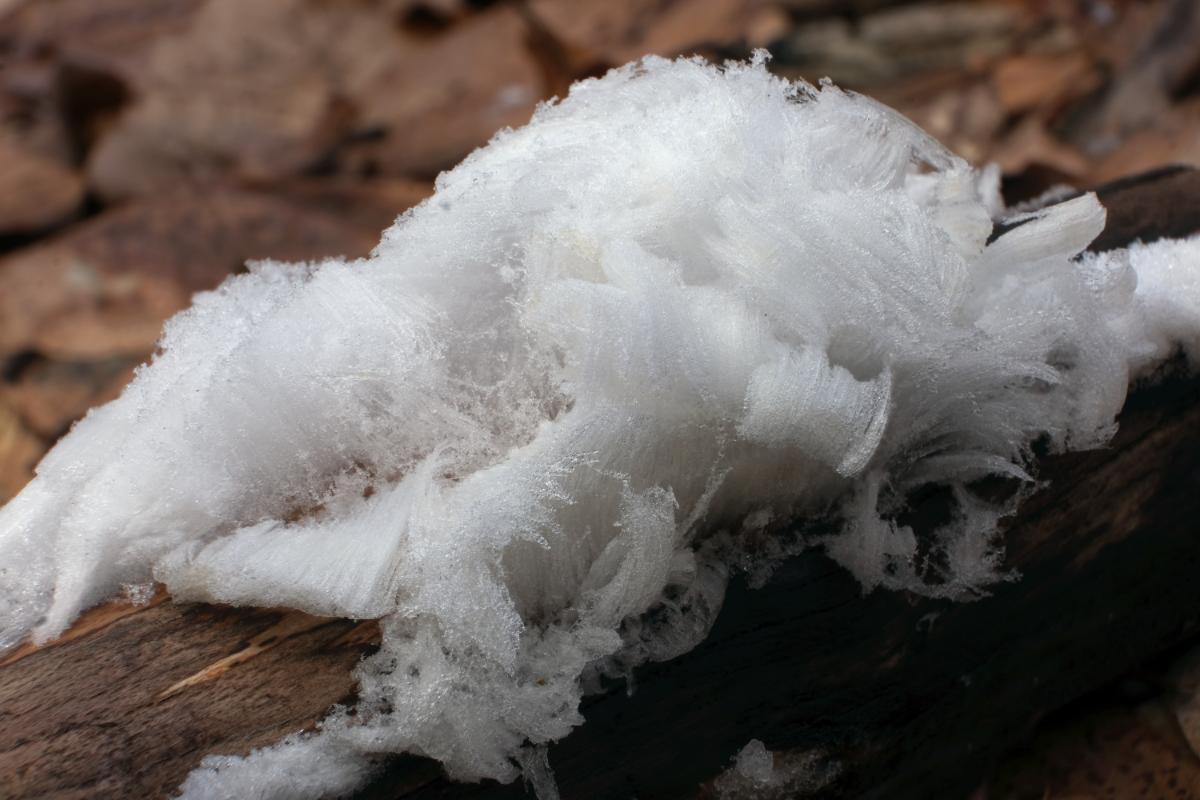
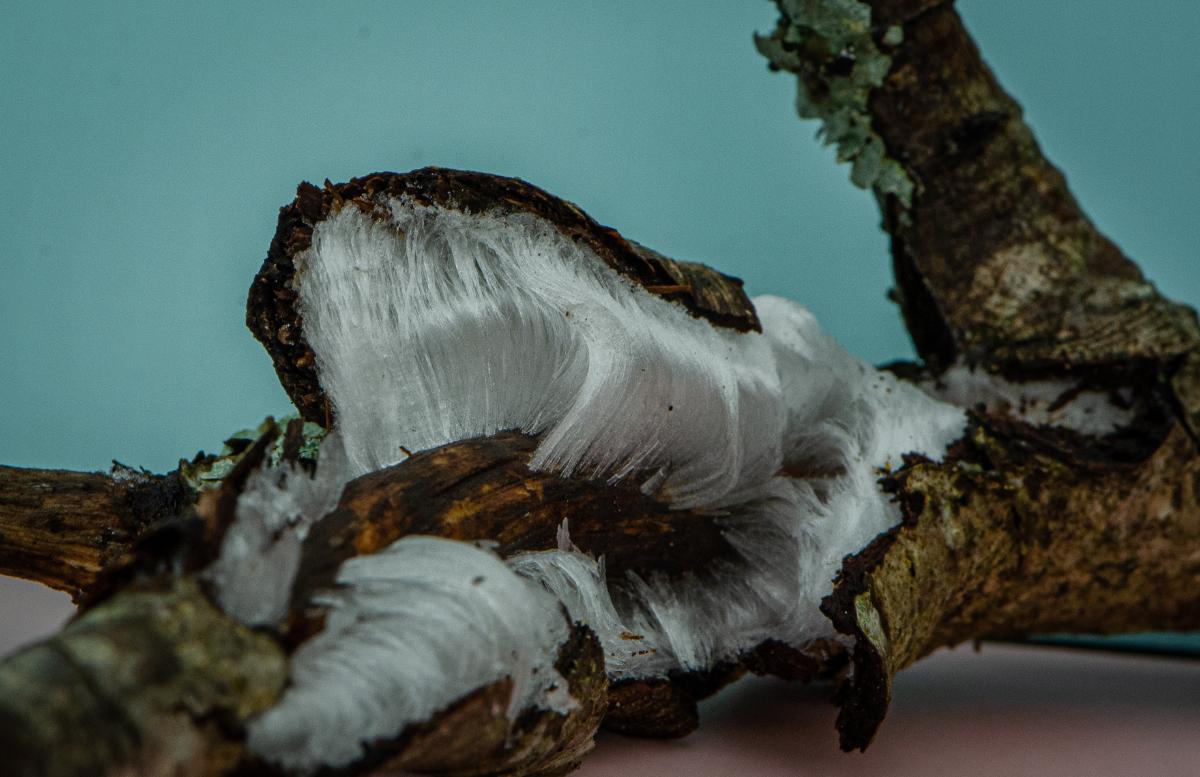
How To Find Hair Ice
The best time to spot hair ice is during early morning walks in the woods, particularly after nights when temperatures have dropped just below freezing.
To increase your chances of finding hair ice, look for these specific conditions:
- Temperatures slightly below 32°F
- High humidity levels
- Rotting broadleaf wood without bark
- Early morning hours before sunrise
Your search will be most successful in areas between 45°N and 55°N latitude. When exploring, focus on fallen hardwood branches, particularly those that are barkless and slightly decomposed. The delicate ice formations are quite fragile, so resist the urge to touch them – they’ll melt away quickly.
Found a patch of hair ice? Mark your discovery spot carefully. These unique spots often produce hair ice repeatedly over several years when conditions are right. The phenomenon typically appears in the same place because the Exidiopsis effusa fungus remains active in the wood.
Remember to be patient and observant during your search. While hair ice can maintain its shape for hours or sometimes even days, it typically disappears as soon as the sun’s warmth touches it.
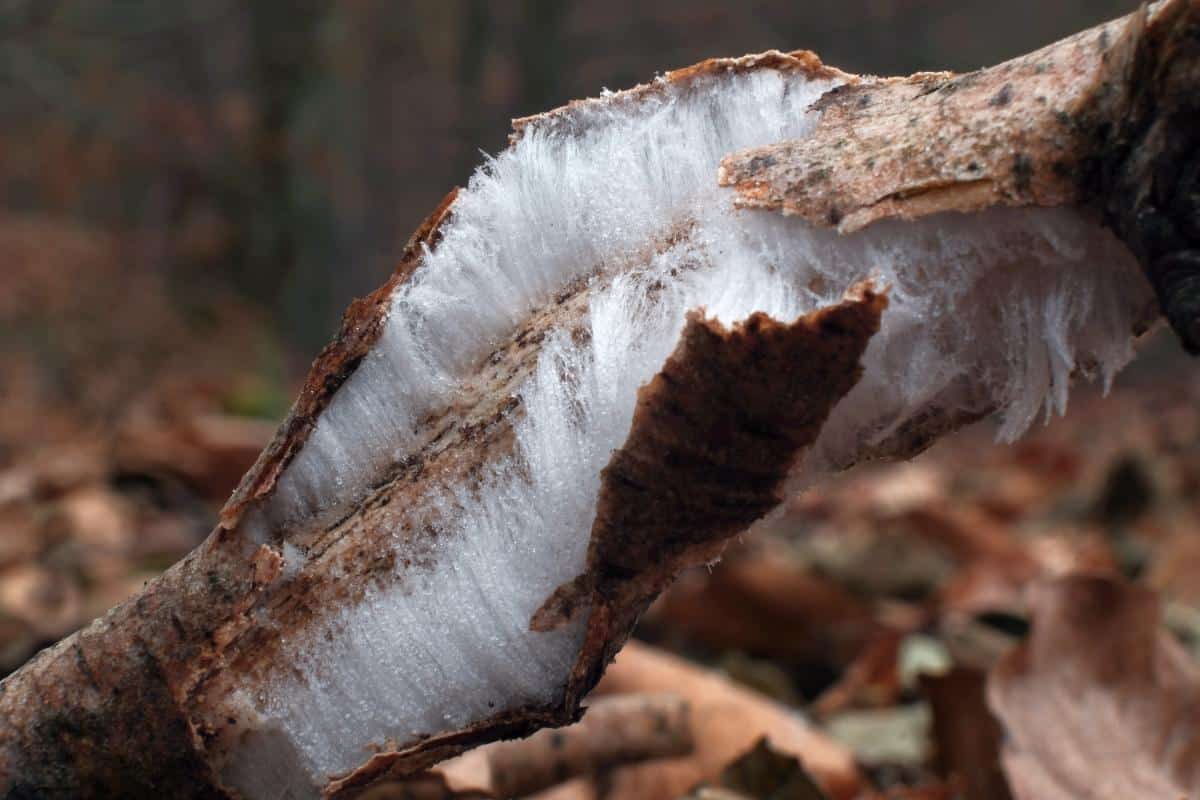
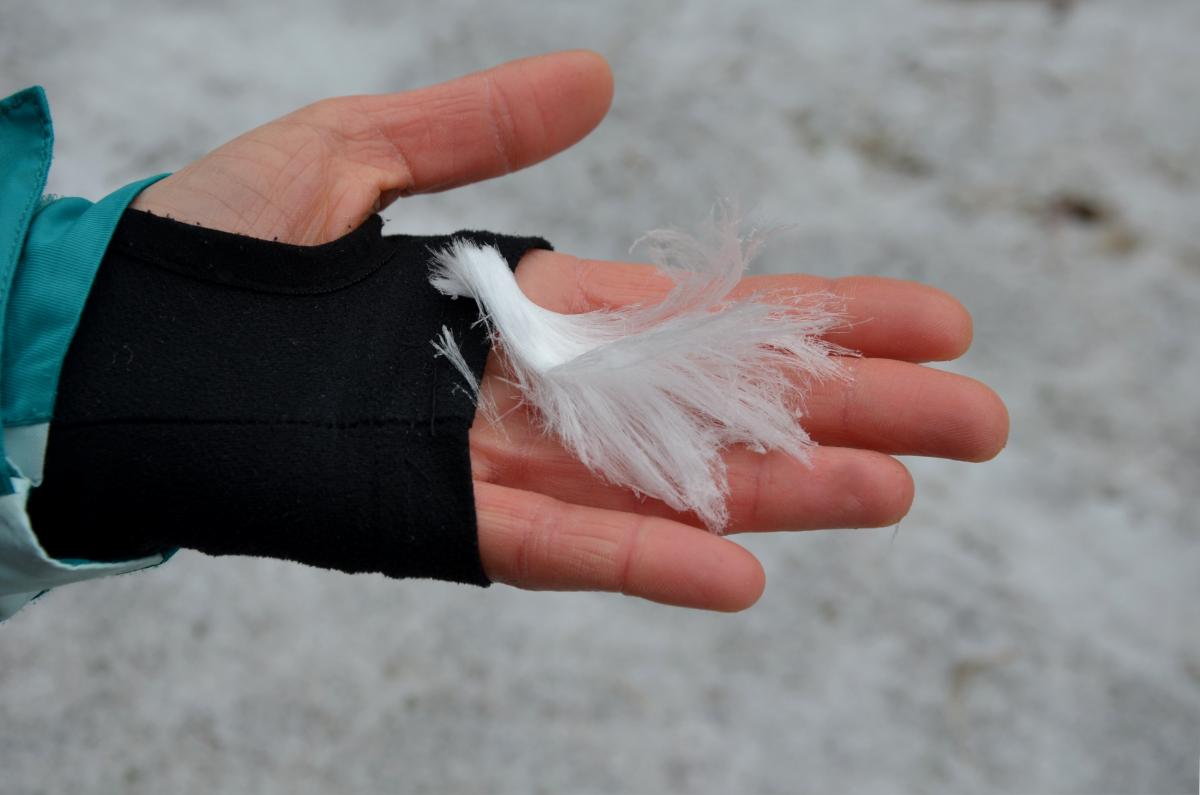
Curious about other strange fungi relationships? Check out how the cordyceps fungus attacks and parasitizes insect larvae (in some cases, using mind control!)
Common Questions About Hair Ice
What causes hair ice to form?
Hair ice forms when water in decaying wood freezes under specific conditions, aided by the fungus Exidiopsis effusa. This process occurs on moist rotting wood from broadleaf trees at temperatures slightly below freezing when there is high humidity.
Where and when can I find hair ice?
Hair ice is typically found in deciduous forests between 45°N and 55°N latitude. The best time to spot it is during early morning walks in winter, particularly after nights when temperatures have dropped just below freezing.
How long does hair ice last?
Hair ice can maintain its delicate structure for hours or even days under the right conditions. However, it typically melts quickly when exposed to sunlight or warmer temperatures.
Can hair ice form repeatedly in the same location?
Yes, a piece of wood that produces hair ice can continue to do so for several years. This is because the Exidiopsis effusa fungus remains active in the wood, allowing for repeated formations when conditions are right.

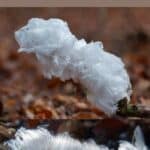
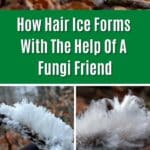
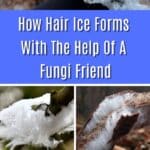
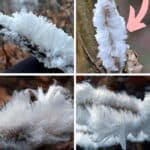

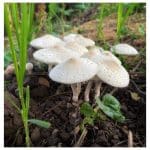
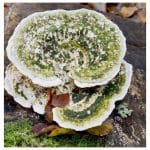
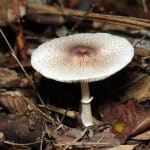
Leave a Reply